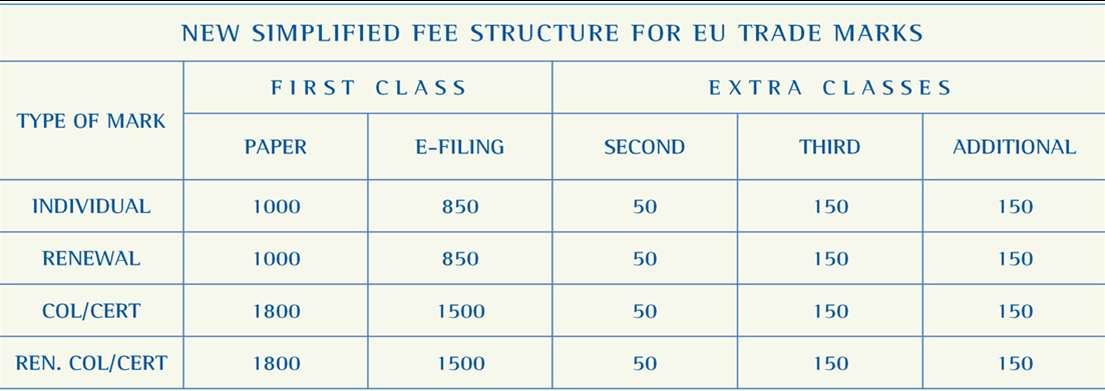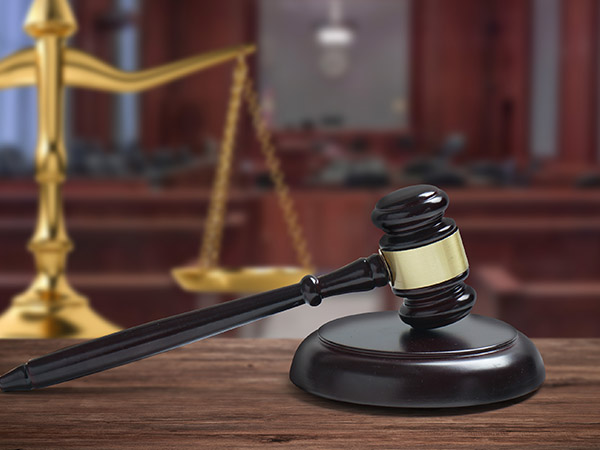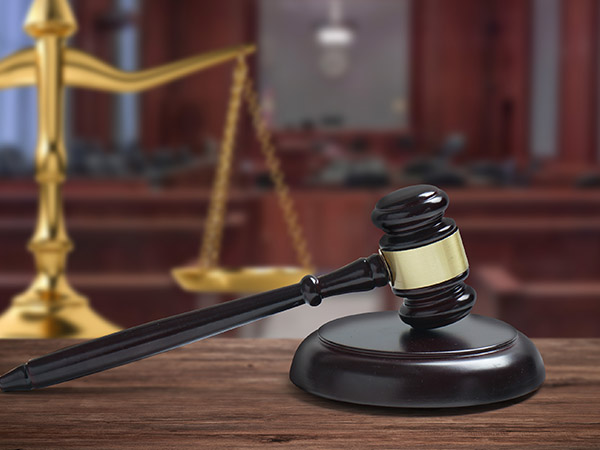The new European Union Trade Mark System (2016/2017)
Guenther Marten
Minister-Counsellor at the EU Delegation in Beijing
My first article on a series on European system of trade marks and designs made explicitly reference to the EUIPO, its tasks, competencies and performance with regard to the management of the European Union Trade Mark (EUTM) system and the Community Design (CD) system. The present article will focus on the content of the Trade Mark Reform Package which has been adopted by the European institutions between 2015 and 2017 with a special focus on the different measures concerning the trade mark registration proceedings.
The EUTM has been created in 1994, with filings admitted as from April 1996. The EUTM system adhered to the Madrid Protocol in 2004.Having processed more than 1 mill. trade marks and touched upon all phases of the proceedings (application, opposition, invalidation, revocation, appeal etc.) it was decided in 2007 to completely review the functioning of the EUTM system and the IP Directive to identify and adopt improvements.On the basis of a study, involving desk research and stakeholder consultations, a reform package has been finally decided with the aim, as far as relevant to the users, to foster innovation and economic growth by making the system more accessible and efficient for them in terms of lower cost and less complexity, increased speed of processing and enhanced predictability of decision making. The EUTM system reform has been implemented in two stages, the first on 26.3.2016 and the second on 1.10.2017. The reform now being fully implemented the aim of the present article is to review some information of value for Chinese practitioners.
The main concept of the dual protection, the one of the Member States (or regional Benelux Bureau) and the protection on the European level, has been maintained. The new IP Directive1 gives more guidance on the minimum protection the Member States have to adopt by 14.1.2019. Moreover, these minimum standards go fairly in the same line as the new EUTM regulation reform. The adoption of both in the same period of time serves therefore to assure that the national and the EUTM protection go in the same direction. Also the principles of examination, opposition, invalidation, cancellation and appeal have been proven adequate and have not been modified but only adapted to reality. It is namely maintained not to have an ex officio relative grounds examination: relative grounds continue to be examined in the inter partes proceedings only (for example opposition). And finally, bad faith continues to be in Europe not a relative ground of opposition but only a relative ground of invalidation.
Now, why the reform has been adopted in two different stages, one in March 2016 and the other in October 2017? The simple answer is that in order to implement the second stage of the reform, different acts had to be adopted by the Commission in the meantime.
As the full reform is now in place on the European level the present article will not make the difference between the first and second stage to simplify the presentation.
As to the application for trademarks (overwhelmingly done electronically) you still can do it as a Chinese practitioner directly and you still need to appoint a European representative in case of inter partes cases. You will however have noticed a change in the fees structure. Until March 2016 the basic fee covered goods and services in three different classes. Such approach may incite applicants to cover more goods and services as actually needed and may lead to the cluster of the register with trade marks protected for goods and services for which they never will be used. From March 2016 onwards an e-filing application has been lowered to EUR 850 (paper filing EUR 1000), covering goods or services in one Class only. For coverage of an additional class an extra of EUR 50 is required and as from the third and more classes the applicable class fee is EUR 150. So, if only one class is required the application and namely the renovation fees are substantially lowered overall. There are also moderate reductions in opposition, cancellation and appeal fees. The new fee structure is represented hereafter, numbers being understood as EUR:

So far, search reports were sent to the applicants which included indications about similar trade marks on the EU or national register for information purposes of the applicants. Users often were not interested in these reports as an own search has been carried out by them before applying and the establishment of the search reports contributed to longer proceedings. With the reform search reports are not anymore established unless the applicant expressly opts in.
Disclaimers were so f a r possible to avoid rejection. After the reform this possibility has been suppressed. Trade marks on the register with disclaimer remain however valid.
The graphical representation was from the beginning of the EUTM system a requirement to comply with. It represented however difficulties with regard to new, non-traditional kind of trade marks such as smell marks, holograms or multi-media marks. Therefore the graphical representation requirement has been abolished to allow this new kind of marks to be on the register. Now, it must still be capable of being represented on the Register in a way that allows the competent authorities and the public to determine the clear and precise subject matter of protection and using generally available technology. The non-exhaustive lists of trade marks mentioned in the rules are: word marks, figurative marks, shape marks, position marks, pattern marks, single colour and combination of colour marks, sound marks, motion marks, multimedia marks, and hologram marks. Word and figurative marks already cover more than 99% or more of the trade marks application, coming three dimensional marks third. The remaining types of marks are rarely sought for but still may present significant difficulties.
During the absolute grounds examination the examiner looks up, among others, conflicts with earlier geographical indications, plant variety denominations and traditional terms for wine. Not being a change of practice it has been clarified in the regulation.
The European Court in a landmark decision has pleaded for the principle that the wording of the goods and services must be clear and precise, the EUIPO being obliged to reject unclear or imprecise wording. In order to provide predictability to the users EUIPO has established a harmonized database, currently comprised of some 70,000 terms in 23 languages (not in Chinese though), which are accepted not only by EUIPO but also by all national/regional systems of the EU.
The enforcement rights have been reinforced. The reform has introduced the right of the EUTM proprietor to prevent third parties from bringing into the EU goods in transit which infringe its trade mark, unless the declarant or holder of the goods in question can prove that there is no infringement in the country of final destination of the goods. Thus the burden of proof is now shifted to the presumed infringer and makes it easier for IPR owners to stop goods in transit. Moreover, the IPR owner is now entitled to prohibit preparatory acts in relation to the use of packaging material or other means.
From the beginning EUIPO registered individual trade marks and collective trade marks. With the reform certification marks are also admissible. It existed in some national systems already and is therefore not something totally new. It has resemblance to the collective marks. The full explanation can be subject to a different article. The short answer would be that certification marks distinguishes goods and services which are certified by the proprietor and used by certified companies and individuals . I t has a quality aspect with regard to the goods and services. The collective marks are owned by associations and used by members of that association for distinguishing goods and services of the members’ association. The fee, EUIPO charges for both, is equally EUR 1500 in case of e-filing.
Being required to provide evidence is always a burden for the representative. EUIPO from the beginning does not require a high formality standard as to power of attorney, company registration, notarised papers etc. It required however the parties to prove through documents earlier rights invoked, for example registration certificates and, if applicable, translation into the language of proceedings. It required also the IPR owner to prove claimed reputation of an earlier mark it owns and did not accept a conveyance to a different proceeding before EUIPO where the same evidence, sometimes composed of more than 200 pages, has been presented. After the reform where such evidence is required to present the corresponding party may provide it by making reference to that source as far as it is accessible online and from a source recognised by the Office.
A recurrent issue is the time when evidence is provided in the course of the proceedings. Corroborated by case law EUIPO developed the practice that evidence, submitted outside the given deadline to the party, is generally not anymore admissible, unless it is an additional evidence of evidence timely provided previously. This practice has now been codified in the regulation. Another problem related to evidence was sometimes its sheer volume provided without specifying which documents serve as evidence for which legal assumption. With the reform the corresponding party is under the obligation to deliver structured evidence indicating the link between the concrete evidence and the facts to be proved.
The effort linked to implement the reform has absorbed a high amount of resources on the EUIPO level. It is hoped that these resources were well the effort worth and that the users may appreciate a better system over time.
Disclaimer: The opinion expressed in this article is exclusively the personal view of the author and binds in no way the employer entities (EUIPO, EU Delegation to China).
photo from: 669pic.com











